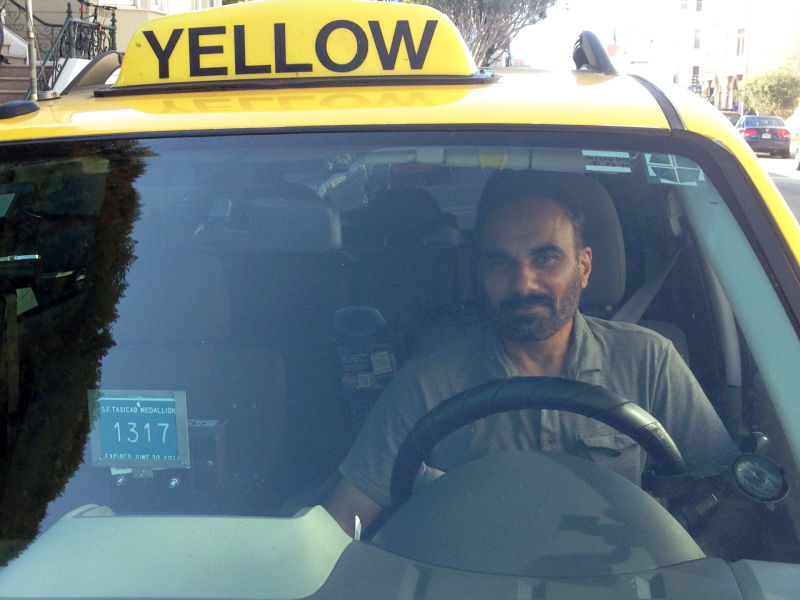In 2012, more than 10 years after he signed on, Batth's name came up. He finally had the chance to buy a medallion. Batth borrowed money from friends and family and gathered up his savings to make a down payment. It was a moment he had been looking forward to for years. That moment has since become one of his greatest regrets.
As Batth was buying his medallion, the whole taxi world was getting turned upside down -- "disrupted" to use tech lingo, or “Ubered” as taxi drivers say. Lyfts and Ubers poured into the streets, all of them operating without medallions. Suddenly there was an explosion of competition that wasn’t playing by the same rules.
Batth couldn't believe it. He'd waited for years to buy a medallion. He was on the hook for a $250,000 loan, but he was competing with drivers who had paid nothing to get into the business. Why wasn’t the city regulating the new companies the same way it did the taxi business?
Ride Services Resist Regulations
Uber and Lyft have spent millions fighting regulations across the country. The ride-hailing companies in California are regulated by the state, and the rules generally aren't as tough or expensive as those imposed by cities like San Francisco.
“I thought ... there should be proper rules and regulations,” Batth says. “We have a very corrupt society back in India. With money, anything gets done. I never thought it would be the same in this country.”
Batth says all the new drivers from these companies have cut his income in half.
“There isn’t enough money coming in at home,” he says. “I’m getting old, and I don’t see a future.”
Batth has a son in college and a 9-year-old daughter in third grade. To cover the bills, his wife has started taking care of the elderly. She makes $10 an hour.
Batth wants to sell his medallion, but says the city has told him he might have to wait four years or more. The MTA says that, so far, about 600 people are on the list to sell their medallions. Batth is near the bottom of the list.
“We put all our lives into this career,” Batth says, “and no one seems to give a damn about it -- the MTA or the city. They're just ignoring us.”
Batth say he's thinking about going back to India, where it will be cheaper to send his daughter to college. But right now he has to keep driving to pay for his medallion. It's right up on his dashboard, a little metal plate that stares him in the face every time he gets behind the wheel.

